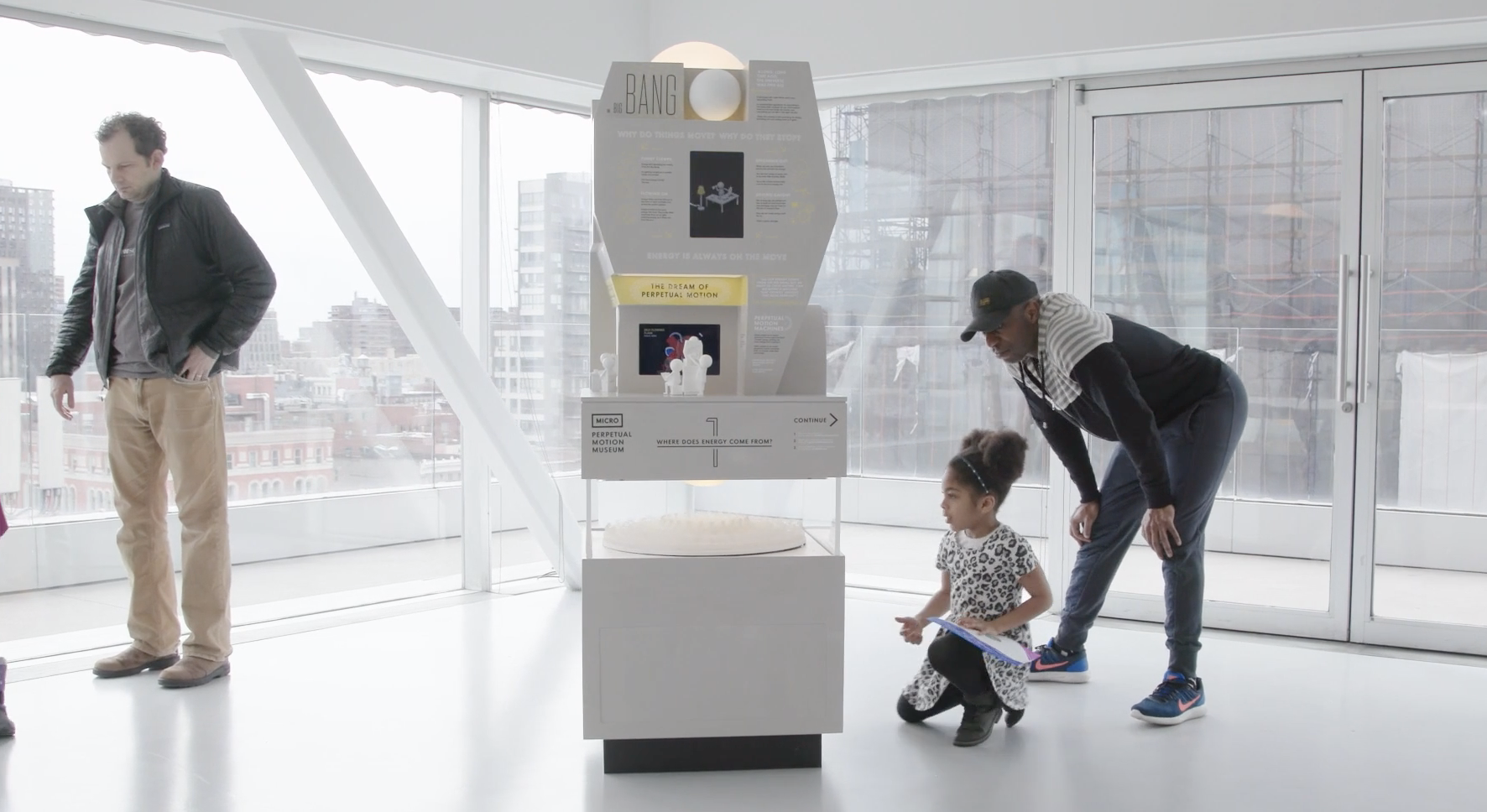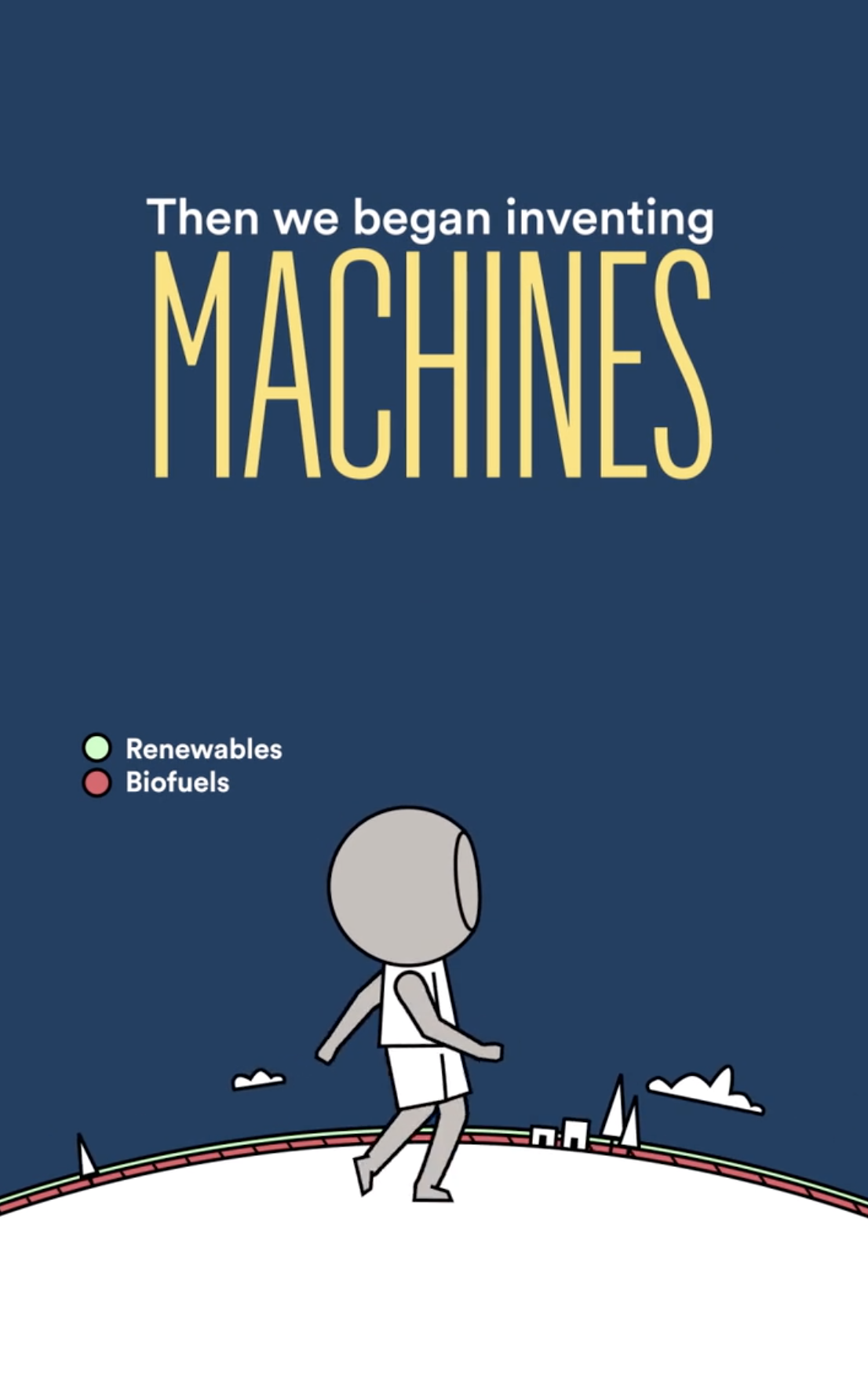
MICRO’s new Perpetual Motion Museum is now in release.
Discover the second installment in our tiny museum series, as it takes you on a whirling journey through earth’s energy system. Traveling from the Big Bang through to the light switches you touch every day, you will explore some of the most mysterious questions in the universe:
Why do things move? Why do they stop?
Inventors have been trying to come up with perpetual motion machines for hundreds of years.
There are two designs for perpetual motion machines:
Perpetual motion machines that try to run forever.
Perpetual motion machines that try to “create” energy, putting out more energy than is going in.
But perpetual motion machines never work. Visit the museum to find out why!
Explore the energy cycle.
In this video, plants are using the sun’s energy to grow. The inventor eats the plants, and the sun’s energy passes into their body.
The inventor transforms the plants’ energy into chemical and mechanical energy to ride the bike. The bike’s mechanical energy turns a magnetic generator, and is transformed into electrical energy.
The electrical energy is stored in a battery, which powers the inventor’s workshop light. Energy is transforming all around us.
We started inventing and building machines long before we understood how energy works, or where it comes from.
And we’ve created amazing machines for harnessing and using energy. But we’ve made some mistakes along the way. 85% of the energy the human world consumes comes from non-renewable, polluting energy sources like fossil fuels.
What are fossil fuels? The sun’s energy, captured and stored by ancient plants and animals.
It takes millions of years to make fossil fuels. And when we burn fossil fuels in our machines, they release pollution as well as heat.
Perpetual Motion doesn’t work. A fixed amount of energy goes into the process of making a wheel spin, and some of it escapes in ways we can’t avoid: sound, friction, heat.
Perpetual motion can’t solve our energy problems. We have to get better at harnessing, using, and storing the energy we already have. If we invented better ways to store energy, it would be easier to use “renewable” energies like wind and solar.
It’s hard, but humans are crazy inventive.
Check out some of the storage inventions scientists and engineers are working on now!
What am I losing?
At MICRO, we measure units of energy as “burritos” just like the US Department of Energy!
Your body runs on energy, just like every machine you use. At the Perpetual Motion Museum, you can see energy escaping your body as heat in MICRO’s IR camera.
Today, the average American consumes 31,000 burritos of energy per year.
You’re only eating around 600 of those burritos to run your body... so what is eating all the rest? Your machines!
Not everyone has access to the same energy ‘diet.’ In fact, the same number of people are living without electricity today as back when the light bulb was first invented.
What can I do?
Keep exploring.
The systems we’ve built to catch, store, and use energy have lots of problems, which means: lots of potential solutions!
See where your energy comes from.
Learn about the challenges facing our electrical grid.
Swap out your incandescent bulbs for LEDs.
Discover how much energy is lost on the journey from the the power plant to your light switch.
How do zoetropes work!?
If you’ve visited the Perpetual Motion Museum, you’ve seen MICRO’s incredible spinning zoetrope.
Magic? Science!
All animation - including everything you see on television - is made of a series of still images flashing at you very fast.
When this happens, your brain links the still images together, giving you the illusion of moving images. This is called the “phi phenomenon.”
When MICRO’s zoetrope starts spinning, a light flashes over the sculpture. Each flash of light shows your brain a still image of the zoetrope in a new position. Your brain fills in the gaps!
All our thanks to the incredible scientists, historians, and artists who are working on, brainstorming, wrangling, losing heat over, and adding facts to the Perpetual Motion Museum, including:
Brian Koberlein, senior lecturer, physics, Rochester Institute of Technology. Paul M. Sutter, cosmological researcher, Department of Astronomy, Ohio State University. Moiya McTier, astrophysicist extra-ordinaire. CREE distinguished professor Shuji Nakamura, University of California, Santa Barbara. Tal Margalith, executive director of technology, California NanoSystems Institute, University of California, Santa Barbara. Nathan Lewis, professor of chemistry, Caltech. Adam Brown, physics research associate, Stanford University. Daniel Busby, Andy Baker, Chris Weisbart and the whole crew of mad engineers and dreamers at Two Bit Circus. Rina Shkrabova, engineer. Anselm Levskaya, physics wrangling. Gaia Donati, associate editor, Springer Nature. Beau Burrows, future wife, zoetrope spinner. Robb Godshaw, artist and wrangler. Pamela Parker, graphic designer. And of course, the incredible Russ Etheridge, animator.
Lead museum design: Labour.
And a very special thanks to our lead science advisors on this museum:
Tristan Ursell, Assistant Professor of Physics, University of Oregon.
Dr. David Brown, scientist-at-large.














